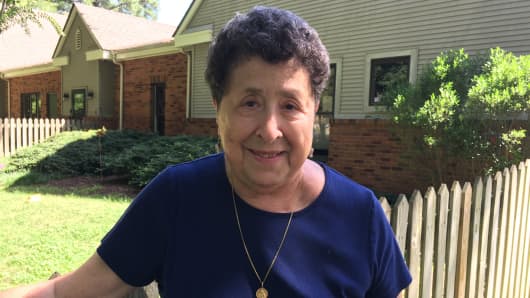CNBC: ‘Employers offer older workers flexible retirement‘ By Tom Anderson, August 21, 2016 2:00 PM ET
Angela Versch worked as a day-care teacher for Bon Secours Health System in Richmond, Virginia, for 17 years. She retired in 2010, but after less than a year, she was back on the job as a substitute teacher.
Versch, now 76, was bored with retirement and wanted to get out of the house. She was able to schedule her work days around visits with her four grandchildren and earn more to supplement her retirement savings.
“My job gives me extra money for the little things, like going out with my grandkids or paying someone to do work around the house,” said Versch, who wants to keep her job until she turns 80. “More older people can put a lot more into working. I’ve been working since I was 17.”
Versch may be the future of retirement and work. By 2024, 1 in 4 U.S. workers will likely be 55 or older, according to the Bureau of Labor Statistics. The growth rate of older workers in the labor force is more than three times that of all workers.
An aging workforce means employers and employees will have to be more flexible.
Phased retirement
A fluid approach to retirement, known as phased retirement, is already happening at the federal government’s largest employer.
The U.S. Department of Defense announced in June that it would allow civilian employees to partially retire while remaining on the job part-time to help better manage its workforce needs. About 77,000 federal workers are eligible for the program though fewer are expected to participate in phased retirement, said a Defense Department spokesman.
The private sector also provides phased retirement to their employees.
About 30 percent of large employers — those with over 1,000 employees — offer workers some flexible retirement option, whether it is allowing older employees to work part time or in job sharing with colleagues, according to WorldatWork, a global association of human resources managers.
Informal arrangements are more common than formal programs.
Only about 6 percent of large employers have formal phased retirement policies, benefits consulting firm Aon Hewitt found, though 42 percent of employers are considering them this year.
“Most employee benefit designs have been around since 1960s and are geared toward families with kids We want to be flexible with our benefits.”
The availability of formal programs depend on the industry, said Roselyn Feinsod, senior partner at benefits consulting firm Aon Hewitt. For example, programs are more available in health care, which often struggles to retain nurses and other professionals.
Phased retirement is not just for highly skilled workers. Jim Godwin, Bon Secours’ vice president of human resources, said the appeal of its phased retirement benefits attract older workers to be patient sitters, who monitor the sick to allow nurses to focus on more urgent cases.
“Most employee benefit designs have been around since 1960s and are geared toward families with kids. We want to be flexible with our benefits,” Godwin said.
Bon Secours changed several of its benefits to make them more appealing to older workers like Versch who want to ease into retirement.
The company changed how its pension plan calculates payouts. It based benefits on the five highest-paying years of service instead of the last five years of service. That move allowed people who reduced their work schedule retain their top pension benefit. It also extended health coverage to part-time employees and allowed employees to use day-care centers for their grandchildren.
“We want our benefits to encourage older workers to stay, not push them to leave,” Godwin said.
Evaluate your options
Phased retirement is not for everyone. Winding down work has a psychological effect that may cause people to lose motivation on the job.
People who downshift don’t “fully anticipate the knock to their psyche and how phased retirement changes how they measure themselves at work,” said Chris McMahon, a Pittsburgh financial advisor. About 20 percent of his clients are offered phased retirement packages, he said. He often encourages them to work full time until they reach their retirement savings goals.
The most important consideration about a phased retirement offer from your employer is figuring out if you will have enough money to maintain your lifestyle. “Almost always, phased retirement results in a reduction in income,” McMahon said.
“Almost always, phased retirement results in a reduction in income.”
Beyond the income hits of a phased retirement, you should know how the job change will affect your Social Security benefits and insurance coverage.
Social Security retirement benefits are based on the average of your 35 highest earning years. If you claim Social Security before your full retirement age to supplement your phased retirement income, it will reduce your total benefits. For most people, it’s better to wait to claim Social Security at least until full retirement age. If you wait to age 70, you can receive your maximum Social Security benefit.
You have to wait until age 65 to qualify for Medicare. Before that age, you’ll need to be covered by your employer’s plan or buy your own insurance. A phased retirement may also reduce the amount of life insurance provided by your employer.
Phased retirement can offer a smoother financial transition into the golden years.
“There’s usually a spending surge right after retirement. A phased retirement can make that surge less abrupt,” said Suzanne Shier, Northern Trust’s chief wealth planning and tax strategist.

